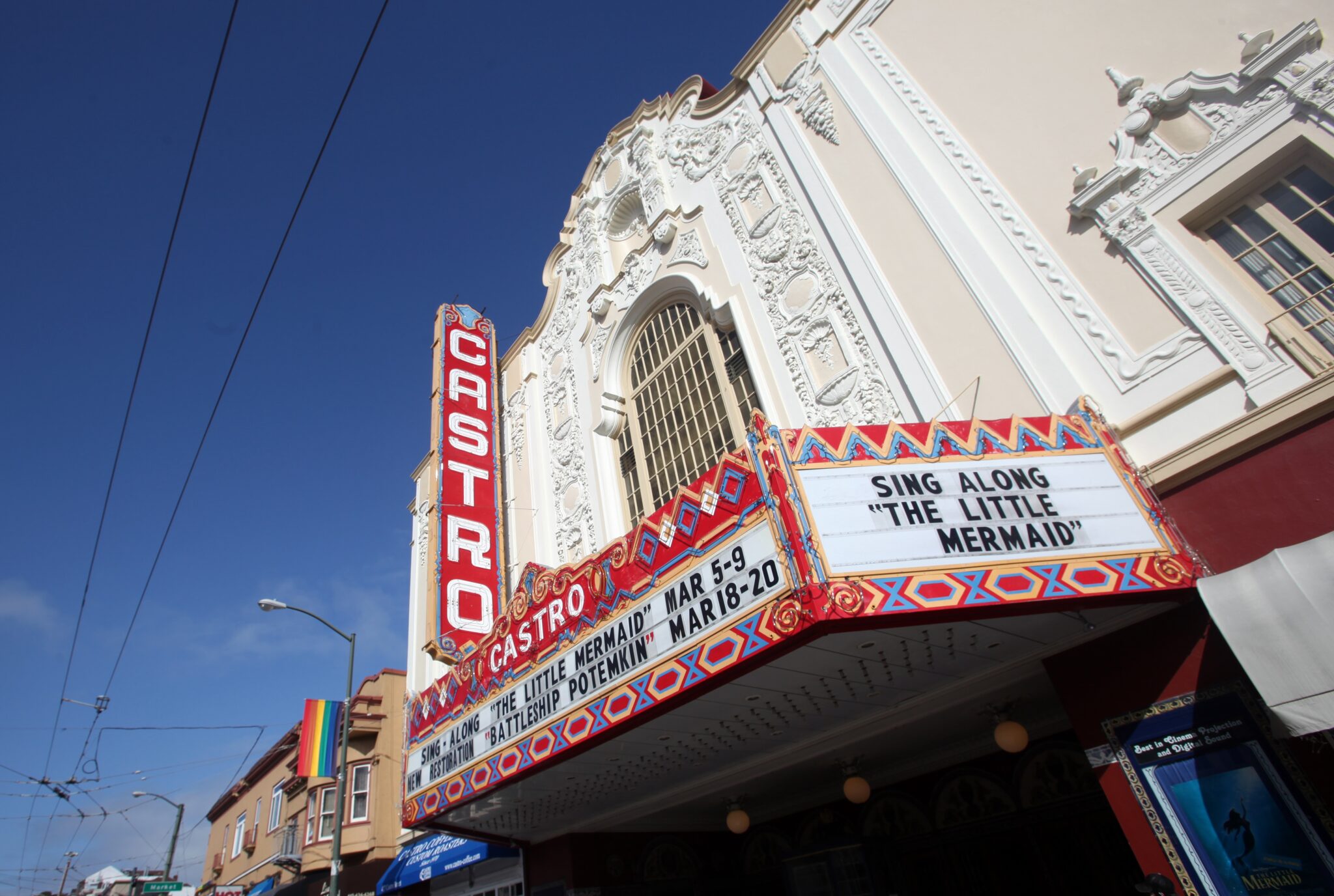Today’s movie megaplexes may offer endless cinematic choices, but as buildings go, they all look the same. Once upon a time, movie theaters were marvels of gilded opulence, evoking romance and style. If you’re dropping into one of these locales, make sure to enjoy a new or classic film on the big screen at one of these historic movie theaters.
Castro Theatre | San Francisco
The Castro, a striking Spanish Renaissance-style theater, is a movie palace built during the Roaring ’20s. Designed by architect Timothy L. Pflueger, the Castro opened in 1922 and showed first-run films until 1976. It changed hands several times in the following years but continued to operate as a movie theater. In 2001, relatives of the Castro’s original owners acquired the theater and restored it.
Today, the Castro screens a regular mix of independent and classic movies, including documentaries and art films. Like many theaters of its era, the Castro’s interior is an opulent mashup of Spanish, Italian, and Asian design motifs. The opulent exterior marquee and dramatic chandelier in the auditorium were both installed in the 1930s. The theater can seat more than 1,400 people.
Egyptian Theatre | Park City, Utah
The discovery of King Tut’s tomb in 1922 set off a craze for Egyptian-style architecture, arts, and crafts. The Egyptian Theatre, which opened in 1926, reflects that era, decorated with hieroglyphics, obelisk-shaped pilasters, and other exotic details. Originally a movie theater and vaudeville house, the Egyptian closed in 1978.
Funded in part by a donation from Park City-based Mrs. Fields Cookies, the Egyptian reopened as a live performance venue in 1981. After additional renovation in 1990, it became one of the venues for the Sundance Film Festival. Today, the Egyptian shows a mix of classic movies, live shows, and other events.
Avalon Theatre | Washington, D.C.
The Avalon is Washington, D.C.’s oldest movie theater. It’s been showing films since 1923 when it opened as the Chevy Chase Theater. In 1970, a second, smaller screening room was opened. The Avalon continued to show movies until 2001 when the owner declared bankruptcy. After being sold to a nonprofit and restored, the Avalon reopened in 2003.
Today, the Avalon remains a part of Washington’s thriving Chevy Chase neighborhood. It screens first-run films, along with occasional classics, and other programs. Digital projection systems were installed in 2013, and there’s a cafe serving food and drink in the lobby.
Tampa Theatre | Tampa, Florida
Built in 1926 as a Paramount Pictures movie palace, the Tampa Theatre showed many kinds of movies in its life, from studio new releases to B movies, before closing in 1973. Local movie buffs and city leaders rallied to save the building, and it reopened in 1977 as a non-profit venue showing first run and classic movies and hosting live events.
The ornate auditorium, with its Spanish, Italian, Babylonian, and Persian influences, was designed to resemble an airy courtyard with arched balconies and a constellation of twinkling illuminated “stars” in the ceiling. The Tampa Theatre was placed on the National Register of Historic Places in 1978.
Plaza Cinema | Ottawa, Kansas
The oldest purpose-built movie theater still in operation, the Plaza (which has also gone by Yale, Bijou, and Crystal Theatre) has been open since 1907, making 112 years of movie magic. The two-screen property now shows feature films on one screen and older films on the other. The second screen is also used as part of a historical tour.
The Plaza Cinema has long held the title of America’s oldest cinema, but owner Peach Madl collected everything from court documents to photographs and building permits to finally receive the official certificate of the world’s oldest cinema from Guinness World Records. Suppose you aren’t impressed by the record-breaking status of the Plaza. In that case, you may still want to see the movie memorabilia museum located behind the screen featuring props, scripts, and costumes from popular films.



